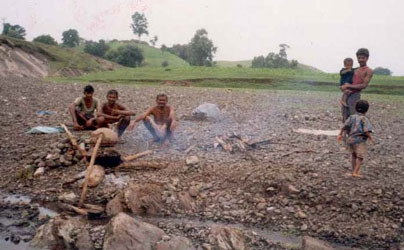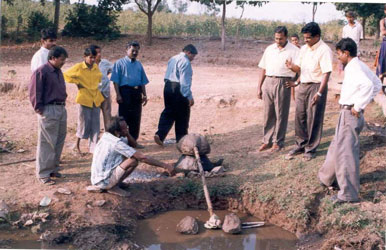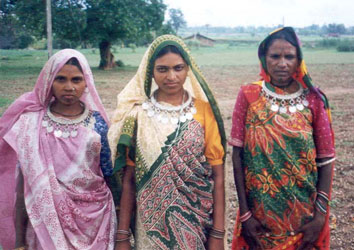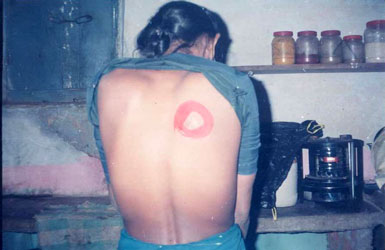|
Climatic condition.
The place has extreme climatic conditions. In
summer it will be very hot and in winter it will be very cold.
During summer a large number of people are affected by extreme heat.
It is a common sight that both adults and children are affected by
bleeding nose. Some even die of extreme heat. People do not have any
winter clothes. They cover themselves with sack cloth made of straw.
Their bed is also made of straw. Usually they make fire out of logs
they cut from hills and lie around the fire place to keep themselves
warm.
Marriage:

It is a custom among the
Bhils that only the groom will bring gifts of ornaments and cash to
the bride just as Rebecca got gifts from Isaac and Abraham.
Generally a 18 year old girl is married to a 14 year old boy. The
reason for this lopsided marriage is very funny. They believe, if a
daughter-in-law comes to their house, she will look after the house,
shouldering all responsibilities. So even a little educated girl has
a better chance of marrying a wealthy boy. The more a girl is
educated the more she is favoured. If the girl does not find favour
with their in laws, she will be sent back with whatever she got from
her husband’s family. So also if the girl does not like the boy, her
parents will bring her back to their family paying back what ever
they got from the boy’s family, if the girl is childless for some
years, the boy will be forced to marry some one else. In that case
the previous girl is sent back to her house. But in some cases both
the girls live amicably.
They have very funny customs for the
marriage. The boy gets a treat from almost all young girls in the
village for 5 or 7 days. They all come every night and smear
turmeric paste all over his body and carry the boy on their
shoulders and sing and dance. This function is enjoyed by everyone
in the village. There is a free flow of arrack for this function. On
the day of the marriage the boy will have to wait at the out skirts
of the village. He will have to wait till the girls family members
come out to take him to the girls house. They even cancel the
marriage for some inauspicious occurrings like a raven hovering
around their house. If the girl insists that she will go with her
husband only after one or two months, the boy will have no other
option but to abide by the wish of the girl. |







